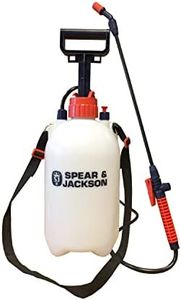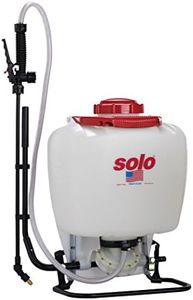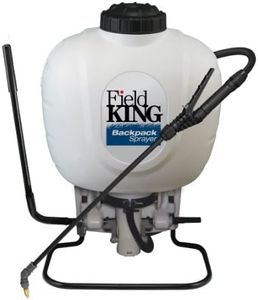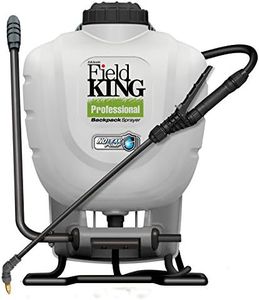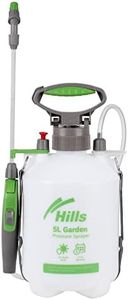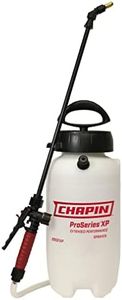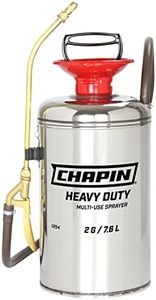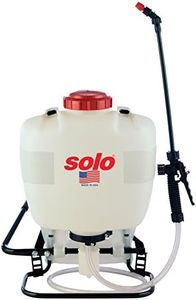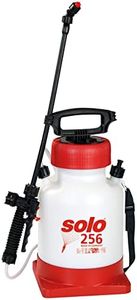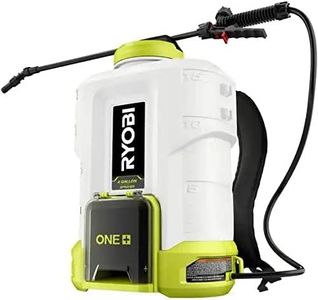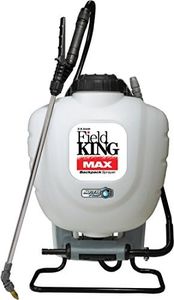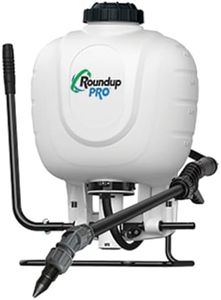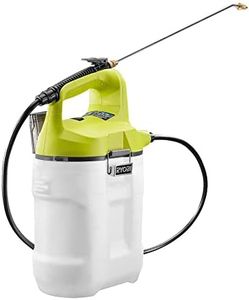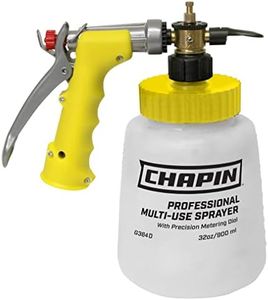We Use CookiesWe use cookies to enhance the security, performance,
functionality and for analytical and promotional activities. By continuing to browse this site you
are agreeing to our privacy policy
10 Best Garden Sprayers
From leading brands and best sellers available on the web.Buying Guide for the Best Garden Sprayers
Choosing the right garden sprayer is all about matching the tool to your garden size and the kinds of tasks you want to tackle, such as watering, fertilizing, or applying pesticides. Think about your comfort while carrying the sprayer and how often you'll use it. Ensuring compatibility with the liquids you want to spray and easy cleaning will also make your gardening experience much smoother. The best sprayer should save you time and effort while helping you care for your plants effectively.CapacityCapacity refers to how much liquid the sprayer can hold, usually measured in liters or gallons. This is important because it determines how much area you can cover before needing to refill. Small capacities (around 1-2 liters) are great for small gardens or spot treatments, while medium capacities (3-8 liters) suit typical home gardens, and large capacities (10 liters and above) work best for bigger areas or frequent use. Choose a sprayer size based on the size of your garden and how long you want to spray without stopping for refills.
Type (Handheld, Backpack, Wheeled)The type of garden sprayer refers to how you carry and operate it. Handheld sprayers are light and best for small jobs; backpack sprayers are worn on your back and ideal for medium to large gardens where you need to move around; wheeled sprayers are pulled or pushed and are suitable for big areas or if carrying heavy equipment is hard for you. Think about your physical comfort, the terrain, and the overall size of your garden when deciding which type will be most convenient.
Pump Mechanism (Manual vs. Battery-Powered)The pump mechanism controls how the sprayer builds pressure. Manual sprayers require you to pump by hand, which gives you control but can get tiring for large tasks. Battery-powered sprayers use motors to maintain pressure, making spraying more effortless and consistent, but they need charging or battery replacements. If you have a small area and don’t mind a little exercise, manual might be fine. For larger gardens or longer spraying sessions, a battery-powered option can make the job much easier.
Nozzle AdjustabilityNozzle adjustability refers to how easily you can change the spray pattern and flow. Some nozzles let you switch from a fine mist to a direct jet, allowing you to water delicate plants gently or target pests more aggressively. A sprayer with an adjustable nozzle is more versatile and useful for different garden tasks. If you need a sprayer for different types of applications or plants, go for a model with good nozzle options.
Material and Build QualityMaterial refers to what the sprayer is made of, such as plastic or metal, and build quality means how sturdy the sprayer feels. Durable materials resist chemicals and impacts, lasting longer in tough gardening conditions. Lightweight plastic is easy to handle but may wear out faster, while thicker plastics or metal parts are more robust but heavier. If you plan to use a sprayer with strong chemicals or need it to last a long time, look for higher build quality.
Ease of CleaningEase of cleaning refers to how simple it is to rinse out and maintain the sprayer after use. A sprayer that’s easy to take apart and clean will prevent blockages and leftover chemicals from harming your plants or mixing with new sprays. If you often switch between different sprays or just want a fuss-free tool, check for features that make cleaning simple, like wide openings and removable parts.
